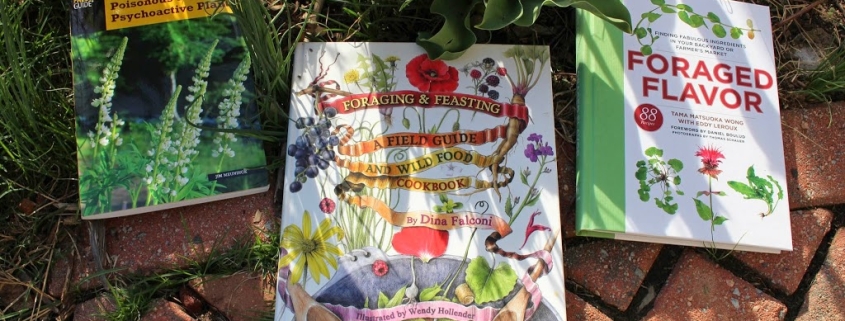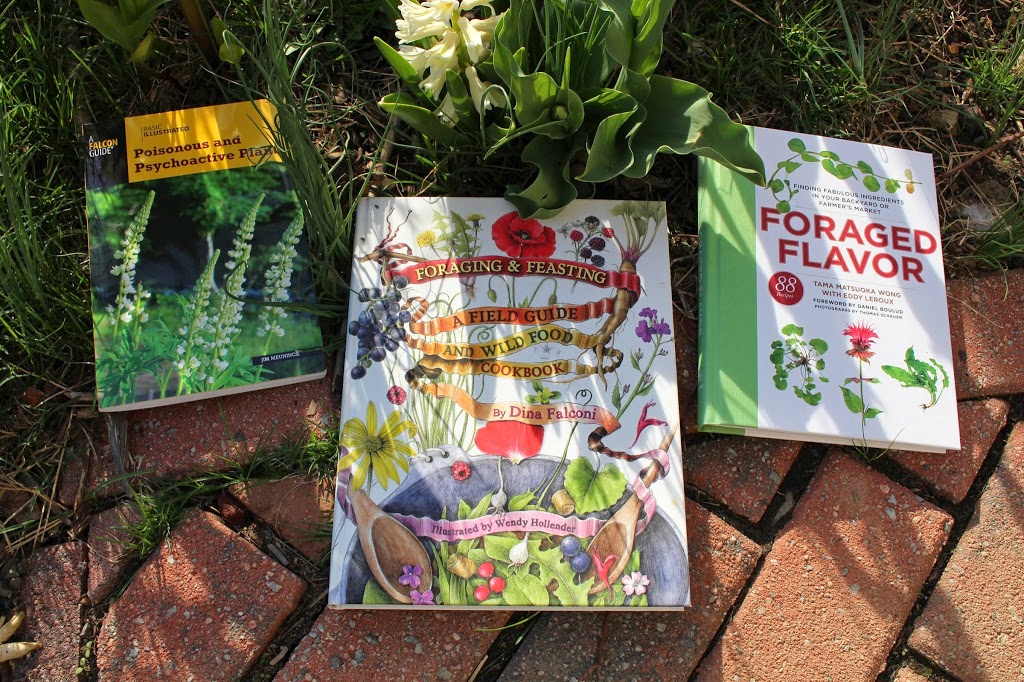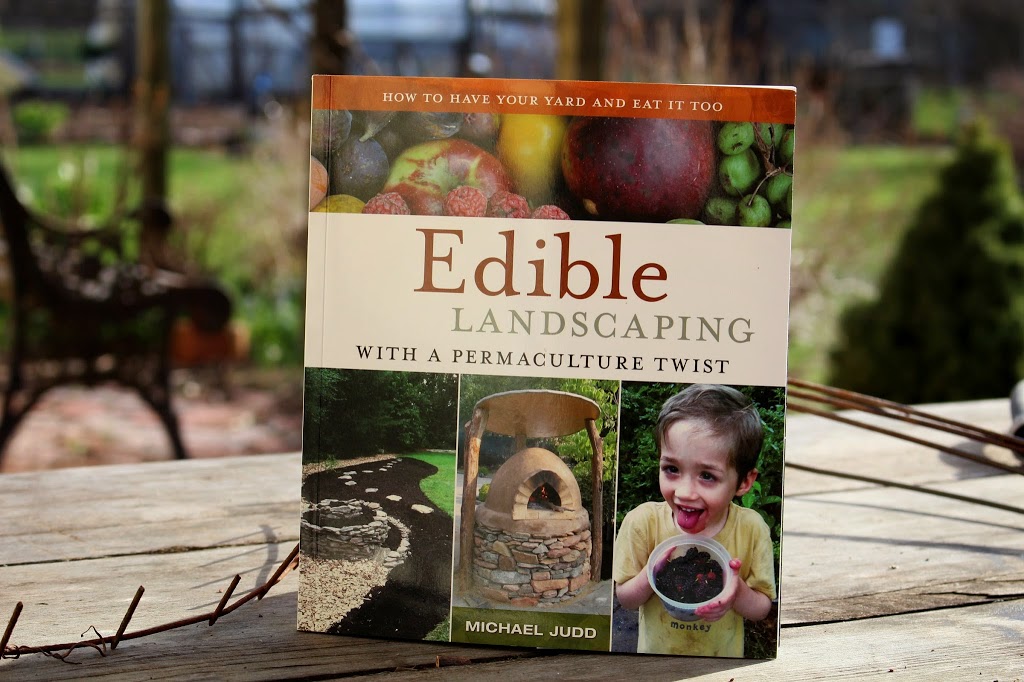Books to Forage By, or Not
I’m more of a cultivated-food type guy than a wild-food type guy. I like to be able to go right out my back door to grab a tomato from a row of tomato plants than have to hike into the woods for a few nibbles of American black currants.
With that said, plenty of overlooked foods — wild plants — grow right at our feet. Plenty of chickweed makes its way in among my early spring lettuces, and more purslane than I could possibly eat insinuates itself at the feet of my corn plants. Black raspberries grow in a semi-cultivated state along the edge of woods here. And when I do head for a walk in field or forest, how nice to come upon wineberries and other refreshing, wild treats. And not everyone has a garden (shudder the thought!).
If, for one reason or another, you’re hankering for some wildness on your plate and you’re at a loss of what purslane, chickweed, or wineberry is, or what to do with them, help is on the way in the form of two books: Foraging & Feasting, by local herbalist Dina Falconi, and Foraged Flavor, by wild-food-to-NYC-restaurants-purveyor Tama Matsuoka Wong. The best thing about both these books is that they really use foraged food as . . . well, food. Not a nibble here, a nibble there. Dina’s “Creamed Wild Greens” packs in 1/2 pound of chopped greens such as nettle, amaranth, and lamb’s quarter. Toma’s “Chilled Mango Soup with Sweet Spruce Tips” is flavored with 1/4 cup of spruce tips. Both books are a great leap forward from the Euell Gibbon’s 1970s classic Stalking the Wild Asparagus, in which it seemed that every wild plant was made palatable with a large dollop of bacon fat. (Then again, Toma’s soup is sweetened with 1/4 cup of sugar and Dina’s wild greens with 1/4 cup of your choice of butter, lard, chicken fat, olive oil, coconut oil, or tallow.)
Both books start out introducing the plants. Toma does it with a clear photograph of each. Dina’s does it with the beautiful, botanical colored-pencil drawings of Wendy Hollender, each page with details and notes on particular features of a plant as well as something about their habitat, life cycle, means of reproduction, size, and various culinary uses. Also, any cautionary notes, such as the note that comfrey can cause liver damage or cancer. (Dina, on the basis of comfrey’s long use and her moderate consumption of it, pooh-poohs the danger, although I personally would not take anecdotal evidence as my guide.) Getting into the recipes, Toma’s book is arranged seasonally, Dina’s according to use, such as soup, condiment, dessert, etc.
So which is the book to buy for a good book about foraging? Both! The recipes are quite different. The approaches are quite different. Even the wild plants are somewhat different. Toma makes no mention of American black currant; Dina makes no mention of wineberry. But then, wild fruits are my favorite wild edibles, once I venture beyond my garden gates.
———————————————–
Let’s flip the coin and rather than going mostly afield, bring some wildness into the garden. Into Michael Judd’s garden, in Frederick, MD, as described in his book Edible Landscaping with a Permaculture Twist. This is a fun book, in its writing, in its photographs (one case in point is the cover photo of a berry-smeared, happy little boy holding a bowlful of berries), and in its illustrations. It’s also got good, solid information. My only beef with this book is the lack of an index.
I find many permaculture books ponderous. Not Michael’s, as evidenced by the “twist” in the title. I have been accused of practicing permaculture but contend that my farmden is, at best, permaculturesque. (For more on my permaculture perspective, see http://leereich.blogspot.com/2010/09/looking-around-at-my-fruit-trees-and.html.) Edible Landscaping with a Permaculture Twist is a good introduction to a lot of arenas: rainwater harvesting, gardening, building an earthen oven, growing mushrooms, making wine. In the permaculture tradition of integrating various components of a homestead, here’s part of Michael’s instructions for building an earth oven: “ . . . buy a case of really good microbrew in bottles and empty them, preferably down your gullet. These empty bottles are going to be part of your base-floor insulation.” He goes on, “I’ve found Flying Dog varieties to work really well,” hoping, he states, for “some sponsorship.”
————————————————
Not all plants in the field, forest, farm, farmden, or garden are friendly. Enter Poisonous and Psychoactive Plants, a short, illustrated guide by Jim Meuninck.
Plants can’t always be neatly placed in either the edible, the poisonous, or the psychoactive box. Pokeweed, for example, is listed in the “Poisonous Wild Plants” chapter but, as the author points out, it is edible if picked at the right time and prepared properly. (Neither Dina nor Toma include pokeweed in their books.) Interestingly, Aloe vera, used for so many skin ailments, is said to cause contact dermatitus in sensitive people. Similarly, some people are allergic to hops. Jimson weed is listed as both a poisonous plant and as a (dangerous) psychoactive plant. The book, with telling photos for all of the plants, is, of course, replete with the usual suspects: poison hemlock, foxglove, angel’s trumpet, oleander, and others.
First aid is listed for all plants in the book, although part of that listed for marijuana is suspect: “Physical and emotional support will carry the day. Keep in mind that the individual may not be able to rise for a restroom excursion.”
All four books can carry you further afield to expand your palette, and keep you from going too far afield.






Thanks for the book recommendations, I will definitely get them